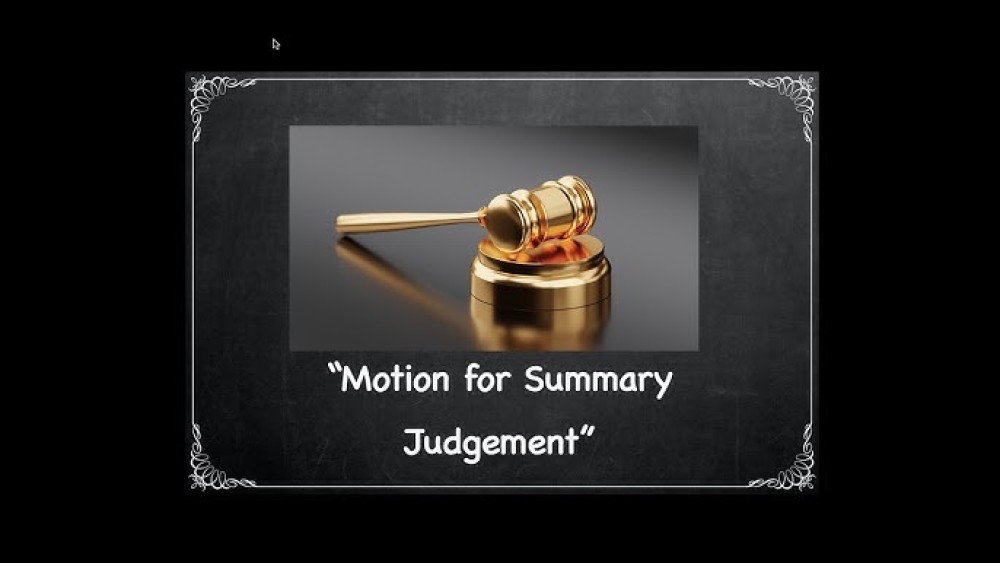Get Your Legal Documents Now!
Whether you are dealing with a complex family matter, facing criminal charges, or navigating the intricacies of business law, our mission is to provide you with comprehensive, compassionate, and expert legal guidance.

Discover the top mistakes to avoid when filing a motion for summary judgment. Learn how to improve your chances of success with expert legal drafting and strategy.
Common Mistakes to Avoid When Filing a Motion for Summary Judgment
Introduction
Filing a motion for summary judgment (MSJ) is a key moment in civil litigation. When executed correctly, it can lead to a swift victory without the need for a trial. However, many motions fail not because the underlying case is weak—but because the motion itself is poorly drafted, procedurally flawed, or tactically misguided.
To succeed, you must understand not just what to include in your MSJ—but also what to avoid. A single error can result in denial, wasted resources, or even sanctions.
In this article, we explore the most common mistakes litigants make when filing a motion for summary judgment and offer strategies to help you craft a winning, court-compliant motion. For professionally drafted summary judgment documents, visit legalhusk.com or legalhusk.com/services/civil-litigation.
1. Filing Too Early in the Case
One of the most frequent—and fatal—errors is filing a summary judgment motion before discovery is complete.
Why It's a Mistake:
Avoid It By:
2. Failing to Follow Procedural Rules
Every court—state and federal—has specific rules for filing and formatting MSJs. Ignoring them can doom your motion.
Common Rule Violations:
Avoid It By:
3. Submitting Inadmissible Evidence
Courts will only consider admissible evidence in support of summary judgment. Submitting unsupported, hearsay, or unauthenticated evidence weakens your case.
Examples of Inadmissible Evidence:
Avoid It By:
4. Ignoring Material Facts in Dispute
Summary judgment is only granted if no genuine dispute of material fact exists. Many motions fail because the movant ignores or downplays factual conflicts.
Avoid It By:
5. Misunderstanding the Legal Standard
Summary judgment is not a trial on the papers. The judge does not weigh credibility or resolve factual conflicts.
Avoid It By:
6. Overloading the Motion with Irrelevant Information
Judges are busy—and legal clutter frustrates them. Long-winded narratives, irrelevant facts, or off-topic legal theories reduce your credibility.
Avoid It By:
7. Failing to Properly Structure the Motion
A poorly organized motion can confuse the judge and undermine your argument.
Strong MSJ Structure Includes:
Avoid It By:
8. Not Addressing All Claims or Elements
Omitting one claim or legal element gives the court a reason to deny the motion.
Avoid It By:
9. Underestimating the Opposition’s Response
Don’t assume the opposing party will be unprepared. Courts often view the record in their favor.
Avoid It By:
10. Forgetting the Strategic Purpose
MSJs are not just legal filings—they're strategic tools. Filing when unnecessary, weak, or premature can backfire.
Avoid It By:
Bonus Tip: Always Prepare for Denial
Even strong motions can be denied. Use the MSJ process to:
If your MSJ is denied, you can still win at trial—especially if your motion exposes the weaknesses of the opposition.
How Legal Husk Helps You Avoid These Mistakes
At Legal Husk, we specialize in litigation-ready, court-compliant legal documents for plaintiffs and defendants. Our services help you:
You can purchase our legal drafting services directly from:
We assist solo litigants, attorneys, and legal teams with documents that get results.
Final Thoughts
Filing a motion for summary judgment is an opportunity to win your case early—but it’s not a shortcut. Avoiding common mistakes—like filing too soon, missing formatting rules, or submitting bad evidence—can mean the difference between success and failure.
With proper planning, legal knowledge, and support, your MSJ can be a powerful step toward resolution.
📩 Need help drafting your MSJ or correcting a flawed one? Visit Legal Husk today to purchase expertly prepared litigation documents and services.
Whether you are dealing with a complex family matter, facing criminal charges, or navigating the intricacies of business law, our mission is to provide you with comprehensive, compassionate, and expert legal guidance.
Comments